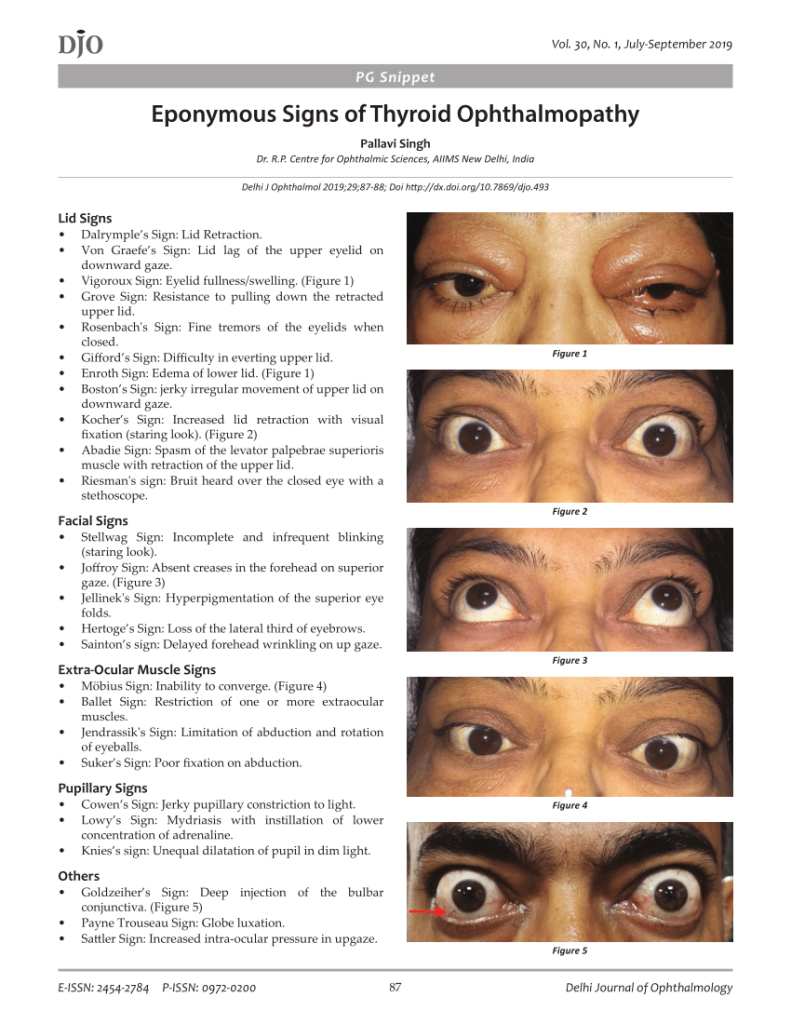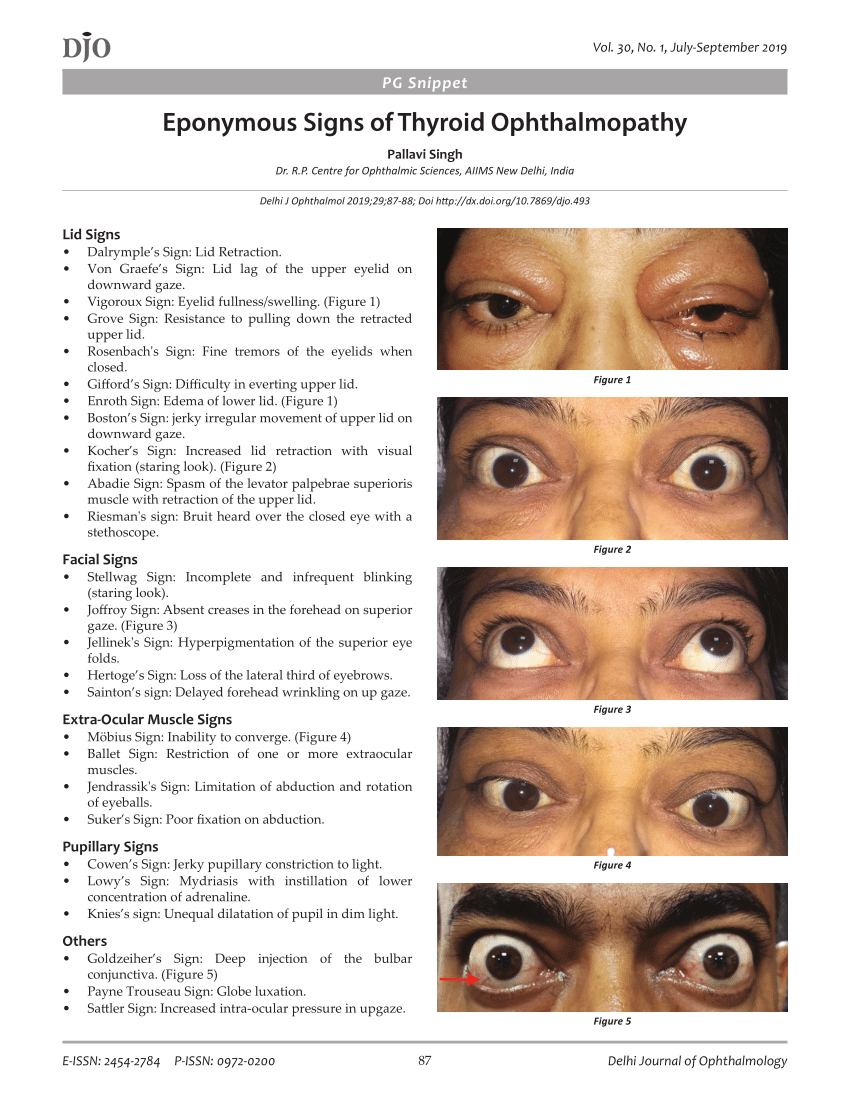Classification
Mnemonic: NO SPECS
| Class | Signs | Comment |
| 0 | No eye signs or symptoms | |
| 1 | Only signs of hyperthyroidism | Lid lag, Lid retraction |
| 2 | Soft tissue swelling | Periorbital edema; red, itchy eye |
| 3 | Proptosis | |
| 4 | Extraocular muscle involvement | Often results in diplopia; pain especially on upgaze |
| 5 | Corneal involvement | Generally a consequence of severe proptosis with failure to protect the cornea |
| 6 | Sight loss due to compressive optic neuropathy | Refer urgently to an ophthalmologist skilled in Grave’s disease |

Eye signs in Grave’s disease
daLRymple’s sign: Lid Retraction
STelwagg’s sign: Staring (infrequent blinking)
von GRaefe sign: Lid lag on looking towards GRound (down gaze)
jofFROy sign: absent FROwning on superior gaze
MObius sign: Unable to MOve eyes inward (converge eyes)

Thanks you are saviour..